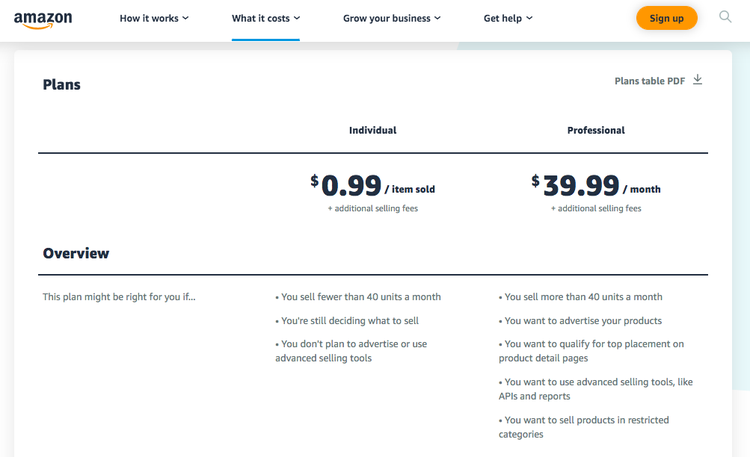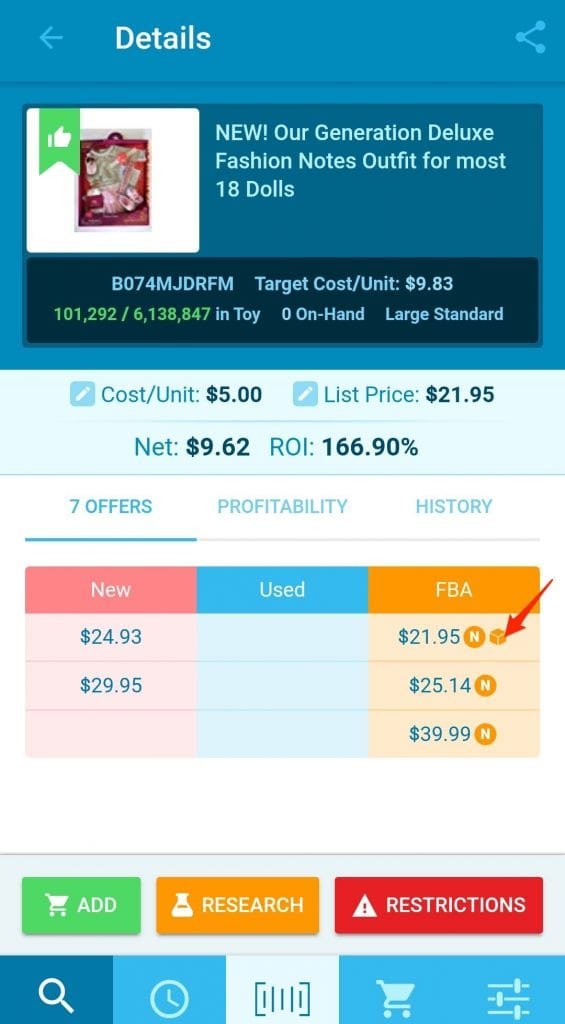Those who have heard of retail arbitrage have likely heard of it in relation to reselling on Amazon. Many people look to retail arbitrage as a quick way to make easy money, yet in reality, there's a lot more involved in making retail arbitrage a successful business model.
In this article, we walk you through what retail arbitrage is, its benefits, and how to get started with the practice.
Overview: What is retail arbitrage?
There are two types of retail arbitrage:
Retail arbitrage (also known as Amazon arbitrage) is the practice of purchasing products for a given price in a brick-and-mortar store such as Walmart and Target, and selling those products, usually on Amazon, for a higher price. For example, while browsing through Walmart’s electronic clearance sale, you pick up a heavily discounted television and sell it via Amazon for a higher price.
Online arbitrage is the practice of buying products from online retailers, again, such as Walmart or Target, and then selling those products for a higher price on another online marketplace, such as Amazon, eBay, or Alibaba.
Retail and online arbitrage have become very popular ways to start an Amazon business at low cost.
3 benefits of retail arbitrage
There are several reasons why online and retail arbitrage has become so popular over the years. Let’s take a look at three of the main benefits of retail arbitrage.
1. Low overhead and barriers to entry
You don’t need a ton of capital to start with retail arbitrage. As an individual seller on Amazon, it costs $0.99 per item sold if you sell fewer than 40 items per month, or $39.99 if you sell more than 40 products a month and want to sell products in restricted categories. There are fulfillment fees to take into consideration, too, but these don’t break the bank.
It’s also super easy to find cheap products to sell when retail and online arbitrage sourcing. For example, if you take advantage of retailer promotions, you can get products at low prices, and can then sell them once the promotion has ended. Low costs also mean you’re not going to have much money tied up in inventory if you can’t sell products right away.
2. Low risks
Arbitrage selling is a low-risk endeavor. Since you don’t have a huge amount of inventory on your hands, if products don’t sell, you can turn to marketplaces such as Poshmark, LetGo, and Craigslist.
3. Endless product opportunities
With online and retail arbitrage, you don’t need to specialize in a certain category or product. If you find a great product at a great price, no matter what it is, you can certainly sell it for a profit.
How to get started with retail arbitrage and earn a profit
If you’ve never done it before, you probably don’t know where to start with retail arbitrage. The following tips will help you get started with retail arbitrage and turn a profit.
1. Create an Amazon seller account
In order to sell on Amazon, you need to create an Amazon account.
First, you’ll need to choose whether you want to pay $0.99 per item sold for a personal account (with this plan, you can only sell up to 40 items per month), or pay a monthly fee of $39.99 for a professional account that will allow you to sell more than 40 items per month.
Note that if you want to sign up for Fulfillment by Amazon (FBA), you’ll need to choose a professional account. For FBA sellers, Amazon takes care of storage, shipping, packaging, and customer support.
The choice will depend on what type of stock you plan to sell, and the value of the items you sell. For example, maybe you’ll sell a handful of big-ticket items per month. In that case, the $0.99 charge might make the most sense. If, however, you’re selling a high quantity of cheaper products, it might make more sense to pay a monthly $39.99 for unlimited items.

Sellers can choose between being charged per item if they sell fewer than 40 products per month or paying $39.99 per month for selling more than 40 items. Image source: Author
2. Download a retail arbitrage app
Before you start buying inventory, you’ll need to download something called a retail arbitrage app. These apps help you identify the best items to sell on Amazon.
It works using the camera on your phone to scan product barcodes, which then pulls up all relevant product data on your phone, such as estimated profits and which products already saturate Amazon, and how much the item already sells for on Amazon.
Retail arbitrage apps are a helpful way to avoid losing money on inventory that is unlikely to sell on Amazon.

Scoutify provides detailed information about products, such as ROI and other offers. Image source: Author
3. Source and purchase profitable products
Depending on what you’re intending to sell, you’ll need to do some research on which retail stores will be your best bet for finding profitable products.
Many in the retail arbitrage business recommend stores such as:
- Walmart
- Home Depot
- Target
- Lowe's
- Office Depot
- Staples
- Kmart
Once you’re in a store, take out your retail arbitrage app and get scanning! Your app will tell you the estimated profit, and the Best Sellers Rank (BSR), which tells you how quickly the product will sell.
4. List and sell your products
When you’ve got the goods, all that’s left to do is list them on Amazon and start selling!
If you’re using fulfillment by Amazon, you’ll then need to ship your items to Amazon so that it can take care of the shipping and packaging of your products. FBA is a great way to save time standing in line at the post office, especially if you’re selling a lot of products.
5. Rinse and repeat!
The process of retail arbitrage is straightforward, and once you’ve done it once, you can do it a thousand times -- only better. You may discover a product niche or a particular store that’s a great spot for picking up profitable items.
Online and retail arbitrage can be a quick way to make a buck or two
Many people get started with online and retail arbitrage as an easy way to make extra money, and they enjoy the benefits of having a side hustle.
However, there are plenty of success stories. There are many people who have gone into retail arbitrage and made more than a quick buck and have made whole careers out of the practice. With the right retail arbitrage strategy and enough time to invest, it’s possible to make a good income.
Once your arbitrage gig gets going, you might find yourself with more retail inventory than when you started, and more orders to fulfill. If that's the case, retail management software can help you manage the processes involved in tracking and managing your products.
We're firm believers in the Golden Rule, which is why editorial opinions are ours alone and have not been previously reviewed, approved, or endorsed by included advertisers. The Ascent, a Motley Fool service, does not cover all offers on the market. The Ascent has a dedicated team of editors and analysts focused on personal finance, and they follow the same set of publishing standards and editorial integrity while maintaining professional separation from the analysts and editors on other Motley Fool brands.